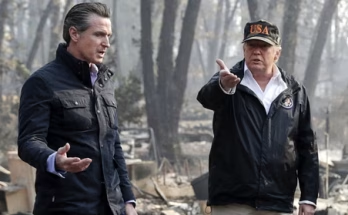In a revelation that has sent shockwaves through both the criminal justice system and the public imagination, forensic investigators have confirmed that the bullet which ended Marcus Ellison’s life last November did not originate from James Robinson’s gun, the man long considered the prime suspect. The announcement has not only upended months of legal proceedings but also ignited fear that the true perpetrator remains at large — a dangerous unknown among us.
The Arrest That Seemed Certain
James Robinson’s arrest in January had appeared airtight. Authorities pointed to surveillance footage showing him near the scene of Ellison’s shooting at the downtown Avalon Nightclub. Investigators had recovered a firearm from his apartment that matched the caliber of the fatal bullet. The media swiftly labeled Robinson as a symbol of rising urban violence, and public sentiment demanded swift justice.

But as new forensic evidence now confirms, the case against Robinson was built on assumptions and circumstantial indicators rather than irrefutable scientific proof. “We can now state with certainty that the bullet that killed Marcus Ellison was not fired from Robinson’s weapon,” said Detective Laura Chen, lead investigator on the case. “This fundamentally alters our understanding of what happened that night and forces us to confront the possibility that the real killer is still free.”
Forensic Breakthrough: Technology Uncovers the Truth
The turning point came when the Bureau of Criminal Investigations enlisted independent ballistics experts to review the case amid growing skepticism from Robinson’s defense team. Using the latest microscopic imaging techniques and three-dimensional striation analysis, experts meticulously compared the unique markings on the bullet with Robinson’s firearm.
“The microscopic grooves and rifling patterns are like fingerprints,” explained Dr. Anthony Ruiz, a forensic ballistics specialist. “When we compared the bullet from the crime scene with Robinson’s gun, there was no match. In fact, the markings suggest a firearm that isn’t cataloged in any of our databases — a weapon from which the fatal shot could have come, but which we haven’t yet located.”
This breakthrough is seismic in its implications. Robinson, previously confined awaiting trial, has been released on bail. His legal team is now calling for a full review of how he became the primary suspect without concrete ballistic confirmation, highlighting the psychological trauma, reputational damage, and disruption to his life caused by a flawed investigation.
Investigative Oversights: How Did This Happen?
Questions about the investigative process have emerged rapidly. How could law enforcement, with all its resources, pin a high-profile murder on Robinson without definitive forensic proof? Legal analysts and former investigators cite “tunnel vision” and the pressure of public scrutiny as major factors.
“Once investigators focus on a suspect, it’s easy for cognitive bias to influence interpretation of evidence,” noted Richard Maloney, former homicide detective. “Small coincidences can be overemphasized, and contradictory evidence can be downplayed. In this case, it appears the system rushed to judgment based on location and weapon similarity, rather than waiting for thorough forensic verification.”
The city’s public, similarly, has been left in a state of distrust. Advocacy groups are demanding transparency and accountability, arguing that the case exposes systemic vulnerabilities. The city council is reportedly exploring the creation of an independent oversight panel to investigate procedural errors, with the goal of preventing future miscarriages of justice.
The Stark Reality: The True Killer Remains Unknown
With Robinson no longer the prime suspect, the focus turns to the unsettling reality: Marcus Ellison’s killer is still unidentified. Law enforcement agencies have reopened investigations, reexamining witness statements, CCTV footage, and ballistic evidence from surrounding neighborhoods.
Detective Chen emphasized the danger of inaction: “The individual responsible for this murder may still be armed and could potentially harm others. Every lead is being pursued with the urgency it demands.”
Criminologists note that cases involving firearms often hinge on precise ballistic data, yet are complicated by the chaotic nature of crime scenes. Dr. Helena Torres, a professor of criminology, explained: “In high-pressure urban crimes, witnesses are often unreliable, and bullets can travel in unpredictable ways. If investigative bias leads to a premature focus on a convenient suspect, the real perpetrator can evade capture entirely.”
Community Outrage and Fear
The public reaction has been intense and polarized. Many are relieved that Robinson has regained his freedom, but fear remains about a murderer still potentially walking free. Social media platforms are rife with speculation, and local neighborhood groups are demanding increased vigilance.
Jordan Matthews, a community activist, voiced a sentiment shared by many: “It’s unacceptable that the real killer may be living among us while an innocent man suffered months behind bars. The system must be held accountable, and public safety must be restored.”
Local businesses and nightlife venues are now reevaluating security protocols, and parents in surrounding neighborhoods express anxiety about letting children out after dark. The psychological ripple effect of such a high-profile case cannot be understated.
Legal and Societal Implications
The Robinson case illuminates deeper challenges within the justice system, particularly the tension between speed and accuracy. Public pressure and media scrutiny often demand rapid results, yet forensic precision requires patience and meticulous methodology. Experts argue that this incident underscores the need for procedural reforms, such as mandatory independent ballistic verification before making arrests in high-stakes cases.

Furthermore, the case raises questions about accountability. Who is responsible when an innocent person is wrongfully accused? How can law enforcement balance investigative discretion with the presumption of innocence? Legal scholars suggest that policies must evolve to prevent future miscarriages, including enhanced oversight and transparency in evidence handling.
Rebuilding Lives and Searching for Justice
While Robinson works to reclaim his life, the Ellison family continues to grapple with loss and uncertainty. “We want justice for Marcus,” said a family spokesperson. “Knowing that the person who killed him may still be out there is terrifying. We hope that the investigation will finally identify the real culprit.”
Law enforcement agencies are issuing renewed calls for tips and evidence from the public, urging anyone with knowledge — no matter how minor — to come forward. The investigation is being treated with the highest priority, with interdepartmental task forces and forensic analysts collaborating to trace leads, track ballistic matches, and scrutinize new suspects.
A Chilling Reminder
This case serves as a sobering reminder of the fragility of justice. A wrongfully accused man has suffered incarceration and public vilification, while the true criminal remains elusive. The bullet that killed Marcus Ellison represents more than a physical projectile; it symbolizes the failings of hasty assumptions and the consequences of cognitive bias in law enforcement.
Detective Chen summarized the current outlook: “This investigation has taught us that the pursuit of truth cannot be rushed. Justice requires diligence, patience, and a relentless commitment to evidence. Our work is far from over, and until the real killer is found, our city cannot feel entirely safe.”
The message is clear: a murderer still walks among us, and the search for answers is far from complete. The case of Marcus Ellison challenges law enforcement, legal scholars, and the public to confront uncomfortable truths about bias, error, and the pursuit of justice.
As the investigation continues, one chilling fact remains: the bullet that killed Marcus Ellison did not come from Robinson’s gun — and until the true perpetrator is apprehended, the specter of danger looms over the city.




